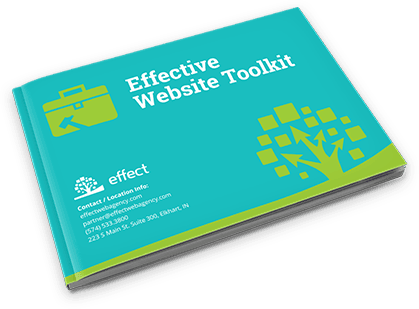Since its boom in popularity in the 1990s, email marketing has remained an important aspect of digital marketing and communication strategies. With careful planning and execution, this strategy can offer businesses a big bang for their buck. Studies show email marketing can generate $36 for every $1 spent, making it one of the most cost-effective digital channels available. Join us as we explore the best practices for ensuring your email marketing efforts drive engagement, conversions, and long-term customer loyalty.
Build and Maintain a Quality Email List
A successful email campaign begins with a high-quality list of subscribers who have expressly opted in to receive communications. Unlike purchased email lists—which often result in low engagement and potential spam complaints—organically built lists contain subscribers genuinely interested in your brand.
One of the easiest ways to build an email list is to use sign-up forms across your website on the homepage, blog articles, or as exit-intent pop-ups. This allows you to capture the contact information of users as they are exploring your content. Businesses can also offer incentives for signing up, like a discount, free eBook, or access to special content. No matter how you collect contact information, ensure your business complies with laws like GDPR and the CAN-SPAM Act by including opt-out options.
Segment Your Target Audience
Segmentation divides your email list into distinct groups based on shared characteristics, such as demographics, behavior, or purchase history. This approach enables you to craft targeted campaigns tailored to the specific needs and interests of each segment. This means that users will be more likely to engage with your emails as they are tailored to their specific needs and pain points. Increased engagement will ultimately turn into higher conversion rates.
Practical Examples of Segmentation:
- Separate new subscribers from long-term customers and create content tailored to their journey.
- Group customers by purchase behavior, such as frequent buyers or those who’ve abandoned carts.
- Use geographic location to tailor promotions or event invites.
Craft Compelling Subject Lines and Preview Texts
The subject line and preview text are the first things your subscribers see. Crafting exciting, compelling text is crucial for encouraging users to open emails. Keep subject lines under 60 characters to ensure they display fully on all devices. Additionally, personalization can be a huge hit with subscribers, making them feel valued by the brand. The preview text, which provides additional context to your email, should complement the subject line and create further intrigue.
Design for User Experience
A well-designed email not only captures attention but also ensures subscribers can easily consume your content. Many users open emails using their mobile devices, so creating a responsive design is crucial for reaching your audience. Make good use of clear headings, short paragraphs, and bullet points to make your content easy to digest. Create clear calls-to-action by incorporating buttons with actionable text like “Shop Now” to guide users to your desired outcome.
Leverage Automation and Drip Campaigns
Automation tools can streamline email workflows, enabling timely and relevant communication without minimal effort. This can include welcome emails when new subscribers join your email list, or behavior-triggered emails like a thank you after purchase. These emails remind users of your brand and add a touch of personalization to their experience.
Test and Analyze Campaign Performance
Testing and data analysis are key to continuous improvement. A/B testing allows you to compare different elements of your campaign to identify what resonates most with your audience.
What to Test:
- Subject lines
- Email layouts
- CTAs (text, placement, color)
- Send times
Track metrics like open rate, click-through rate (CTR), conversion rate, and unsubscribe rate.
Ensure Deliverability and Compliance
Email deliverability determines whether your emails reach the intended inbox or get flagged as spam. Poor deliverability can significantly impact engagement rates. Certain words and phrases can mark your content as spam, so avoid words like “FREE” and excessive use of exclamation points.
Focus on Content Relevance and Value
Subscribers remain loyal when your emails consistently deliver value. Understanding your audience’s preferences is key to maintaining relevance. Focus on creating high-quality content like blog posts, guides, and tutorials that address your audience’s pain points.
Choose Optimal Send Times
The timing of your emails can significantly impact their success. Sending at the wrong time might cause your emails to get lost in crowded inboxes. Use historical engagement data to determine when your audience is most active, whether it be morning, afternoon, or evening. Experiment with different send times to determine the best time for your audience.
Leverage Analytics for Continuous Improvement
Email marketing is an iterative process. Analytics can help you determine what is working and what needs improvement in your email marketing strategy. Track how engagement evolves over time and adjust your strategy accordingly.
Email marketing is one of the most powerful tools for engaging your audience and driving measurable results. By following these best practices—such as building a high-quality list, personalizing content, optimizing design, and leveraging analytics—you can maximize your ROI and create long-term value for your business.
We Can Help!
Effect Web Agency provides web design and marketing services for local, regional, national, and international clients. Contact us to learn how you can improve your online visibility.




